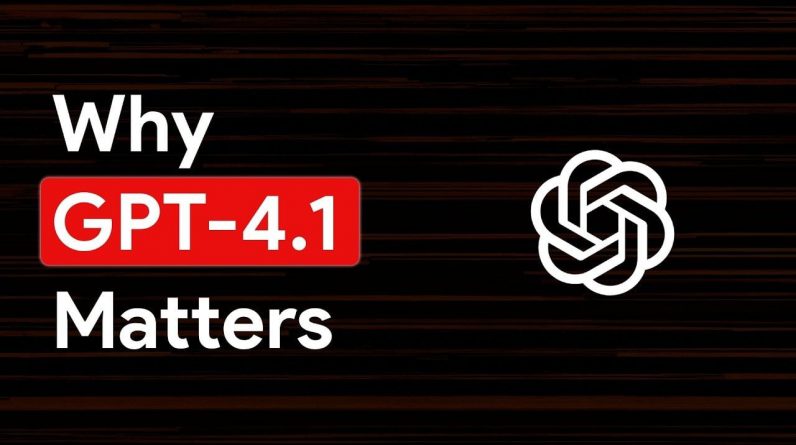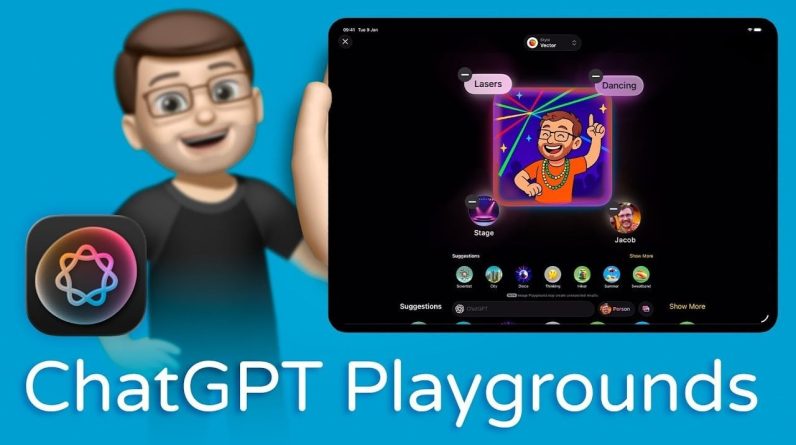
The release of OpenAI’s GPT-4.1 series marks a pivotal moment in the rapidly advancing field of artificial intelligence. With the introduction of three distinct models—GPT-4.1, GPT-4.1 Mini, and GPT-4.1 Nano—OpenAI aims to address growing enterprise demands for scalable, high-performance AI solutions while closing competitive gaps in the market. These models promise faster response times, enhanced capabilities, and improved performance. However, they also highlight areas where OpenAI faces challenges, particularly in comparison to competitors like Anthropic and Google.
In this guide, Sam Witteveen unpacks the key advancements of GPT-4.1, GPT-4.1 Mini, and GPT-4.1 Nano, explaining how they cater to enterprise needs while addressing competitive pressures. You’ll learn about the models’ improved instruction-following, enhanced coding capabilities, and faster performance, as well as the strategic decisions behind deprecating GPT-4.5. Whether you’re curious about how these models stack up against rivals or want to understand their potential impact on the AI ecosystem, this tutorial offers actionable insights and a forward-looking perspective. Get ready to explore the nuances of OpenAI’s latest release and what it signals for the future of enterprise AI.
What Sets GPT-4.1 Apart
TL;DR Key Takeaways :
- OpenAI’s GPT-4.1 series introduces three models—GPT-4.1, GPT-4.1 Mini, and GPT-4.1 Nano—tailored for enterprise needs, offering faster response times, enhanced capabilities, and improved scalability.
- Key advancements include an expanded context window (up to 1 million tokens), reduced latency, enhanced coding capabilities, and improved instruction-following accuracy.
- The deprecation of GPT-4.5 reflects OpenAI’s strategic focus on streamlining offerings and reducing operational costs, with potential for future open source releases.
- Limitations include a maximum output token cap of 32,000 and the absence of audio processing, leaving room for competitors to excel in multimedia and extended content generation.
- OpenAI’s roadmap includes the anticipated GPT-5 and potential open source models, aiming to address current gaps and maintain leadership in the competitive AI landscape.
The GPT-4.1 series is a direct response to rival models such as Anthropic’s Claude and Google’s Gemini. Each model in the series is designed to meet specific needs, offering flexibility for a wide range of enterprise applications:
- GPT-4.1: The flagship model, optimized for handling complex tasks that require advanced reasoning and precise instruction-following.
- GPT-4.1 Mini: A smaller, faster variant tailored for latency-sensitive applications where speed is a critical factor.
- GPT-4.1 Nano: The most lightweight option, designed for cost-efficiency while retaining essential functionality.
These models replace the now-deprecated GPT-4.5, which faced limited adoption due to high operational costs and scalability issues. By streamlining its offerings, OpenAI is positioning itself to better compete in the enterprise AI market, making sure its solutions remain relevant and effective.
Key Advancements in GPT-4.1
The GPT-4.1 series introduces several notable improvements that address critical performance and usability challenges, making it a strong contender in the AI landscape:
- Expanded Context Window: With support for up to 1 million tokens, GPT-4.1 matches competitors like Gemini, allowing it to process long-form content and complex datasets more effectively.
- Reduced Latency: The Mini and Nano models deliver significantly faster response times, making them ideal for real-time applications such as customer support and live data analysis.
- Enhanced Coding Capabilities: GPT-4.1 excels in tasks like debugging, code generation, and language-specific optimizations, narrowing the gap with competitors like Anthropic’s Claude.
- Improved Instruction Following: The models demonstrate greater accuracy in adhering to complex instructions, reducing errors and overconfidence in uncertain scenarios.
These advancements make the GPT-4.1 series a compelling choice for enterprises seeking reliable, high-performance AI tools capable of handling diverse and demanding tasks.
Why GPT-4.1 Matters – The Catchup AI Models
Stay informed about the latest in GPT-4 AI models by exploring our other resources and articles.
Strategic Shifts and Implications
The launch of GPT-4.1 reflects OpenAI’s broader strategic priorities as it navigates the competitive AI ecosystem. Several key moves highlight this shift:
- Streamlining Offerings: By deprecating GPT-4.5, OpenAI has reduced operational costs and concentrated its resources on models with greater impact and scalability.
- Potential Open source Releases: The Mini and Nano architectures may serve as a foundation for future open source models, fostering transparency and collaboration within the AI community.
These strategies underscore OpenAI’s commitment to maintaining its leadership position while adapting to the evolving needs of enterprise clients. By focusing on scalability, performance, and cost-efficiency, OpenAI is aligning its offerings with market demands.
Challenges and Missed Opportunities
Despite its advancements, the GPT-4.1 series has notable limitations that leave room for improvement:
- Token Output Limitations: The maximum output token limit remains capped at 32,000, restricting the models’ ability to generate extensive long-form content, which could hinder certain applications.
- Absence of Audio Processing: The lack of audio capabilities limits the models’ utility in areas such as transcription, voice-based interactions, and audio-driven Q&A systems.
These gaps highlight areas where competitors may still hold an advantage, particularly in multimedia applications and extended content generation. Addressing these limitations will be crucial for OpenAI to maintain its competitive edge.
Competitive Landscape
OpenAI remains a leader in enterprise AI adoption, but the competition is intensifying. Rivals like Anthropic and Google are pushing the boundaries with models that excel in reasoning, multimodal capabilities, and niche applications. While GPT-4.1 focuses on scalability and performance for large enterprises, it may not be as accessible to smaller developers or startups, potentially leaving a significant market segment underserved. This accessibility gap could provide an opening for competitors to capture a broader audience.
Looking Ahead: OpenAI’s Roadmap
OpenAI’s future plans include the anticipated release of GPT-5 and the potential development of open source models. These advancements are expected to further enhance instruction-following, reasoning, and scalability while addressing current limitations. As the AI ecosystem continues to evolve, OpenAI’s focus on enterprise solutions and strategic innovation will likely shape its role in the competitive landscape. By addressing existing challenges and exploring new opportunities, OpenAI has the potential to redefine the standards of enterprise AI and maintain its leadership in the field.
Media Credit: Sam Witteveen
Filed Under: AI, Technology News, Top News
Latest Geeky Gadgets Deals
If you buy something through one of these links, Geeky Gadgets may earn an affiliate commission. Learn about our Disclosure Policy.
Originally Appeared Here






